Wine Enthusiast |
- Budapest’s Natural Wine Scene Embraces Hungary’s Roots
- Amid Climate Change, Napa Goes Beyond Cabernet
- Go for the Gold: 10 Belgian-Style Tripels Perfect for Summer
| Budapest’s Natural Wine Scene Embraces Hungary’s Roots Posted: 02 Jun 2021 04:50 AM PDT  In fall 2019, Máté Szekeres and Regina Ujszászi opened Portobello, a minimalist, contemporary space on a quiet corner in Budapest's District V. It serves a petite, vegetarian-focused menu alongside coffee, the domain of Szekeres, and natural wine, Ujszászi's forte. The couple lived in Ireland for a decade before they returned to Hungary and, in Dublin, Ujszászi fell in love with minimal-intervention wines. Despite their appeal in European metropolises like Paris and Copenhagen, these wines were still largely under-the-radar in Budapest. But Ujszászi and Szekeres anticipated that Portobello would attract like-minded locals and savvy travelers with eco-conscious bottles from small Hungarian producers.  "We are fortunate that we have loyal customers, and keep gaining more, who care about what they eat and drink," says Ujszászi. "They trust us with our recommendations and ask for our opinions. And even if they don't agree with us, they let us know. We like to have an honest, transparent relationship with them." Overseas, Hungary is most famous for Tokaji sweet aszú. The country's wine culture is far more complex, with 22 wine regions cultivating indigenous grapes like Furmint and Kadarka. Although natural wine production across the country is negligible, interest is taking hold. Hungary has a long winemaking heritage, with its roots that trace at least to when it was a province of the Roman Empire named Pannonia. But the country's wine history is intertwined with phylloxera, two World Wars and the Communist party's rise to power in 1949, which upended a once-flourishing industry. What came of it was shoddy, mass-produced wine. When Communism began to fall in 1989, winemakers carefully set out to re-establish their notable family names. It took years for Hungary to turn out impressive wines again. Today, Budapest sommeliers often champion well-known brands like Sauska and Kreinbacher. But there's been resistance to incorporate domestic natural bottlings onto wine lists, as they're often viewed as unpredictable, inferior or as a fleeting trend. 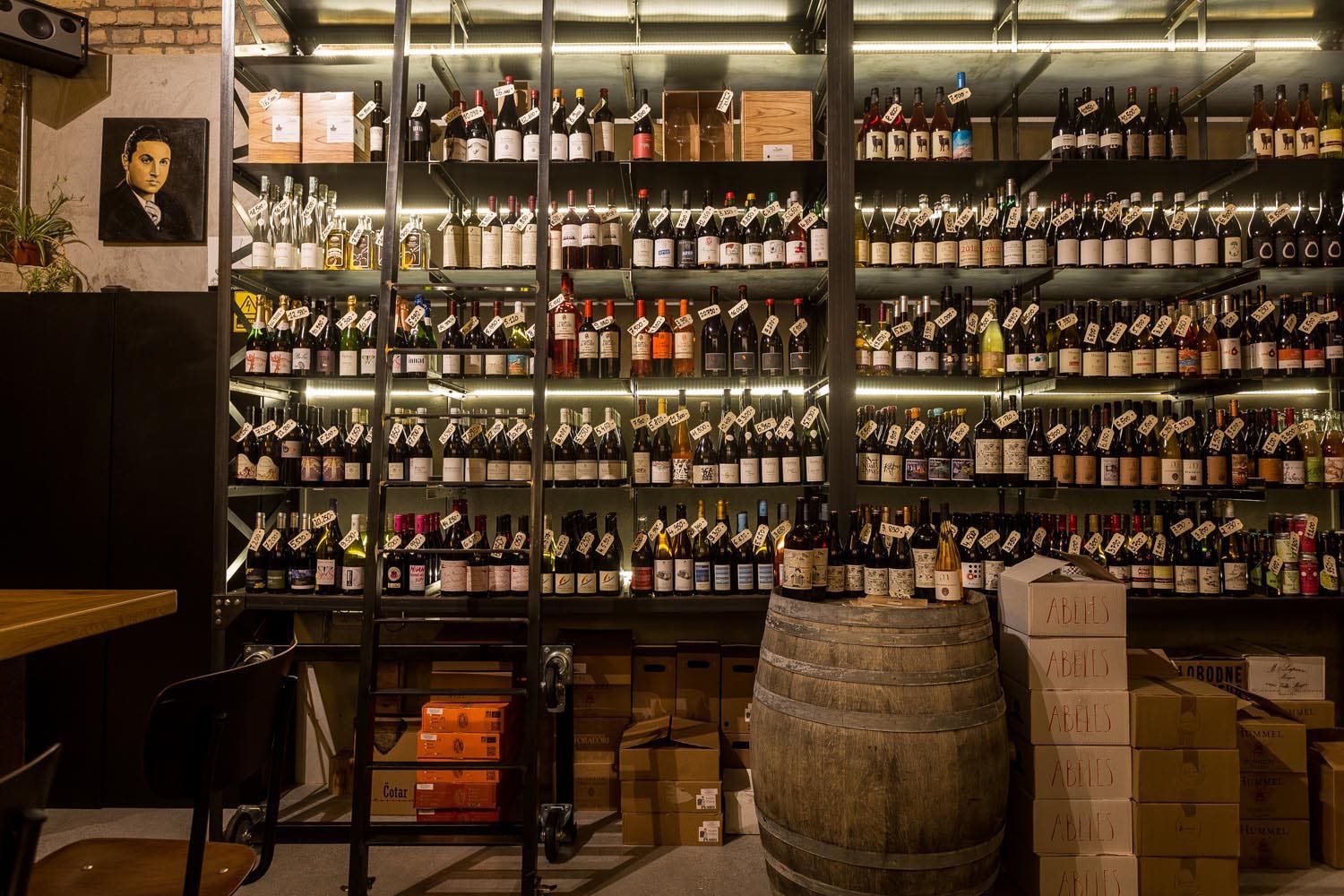 Jean-Julien Ricard thinks differently. In 2020, the French expat opened Marlou Wine Bar & Store, a brick-walled hideaway that sells small plates and a good selection of natural wines from across Europe. When he ran a wine bar in Paris, Ricard was so impressed with Hungarian natural wines that he added them to the menu. "People were really curious about them and wanting to know and discover different and original wines outside the classical sweet Tokaj," he says. Ricard describes what he calls a paradox concerning natural wine in the country. Winegrowers slowly move toward natural viticulture and winemaking methods, but those wines find much more recognition in export markets than at home. "This is why I finally decided to come and live here," says Ricard. "My goal is to help the local winegrowers to develop themselves by having an address which brings together wines made with low intervention." Marlou Wine Bar & Store and Portobello have helped these wines gain a wider platform in Budapest. The venues emphasize quality and winemaking processes that mirror esteemed Hungarian traditions. "How the wine is made is important, but it also has to taste good," says Ujszászi. "The winemakers we highlight are all passionate and knowledgeable, and there are stories and beautiful places behind their wines." 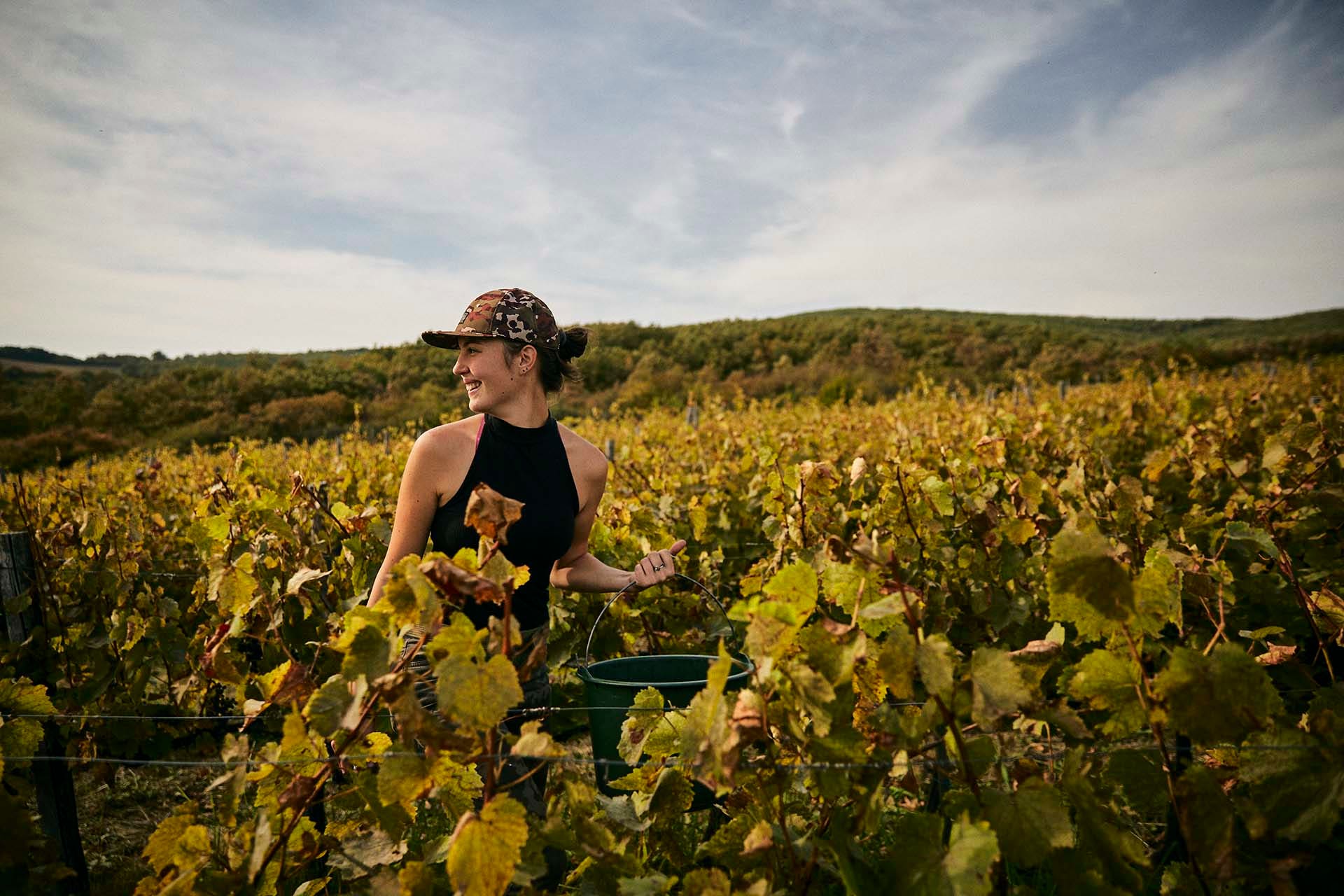 The wines at Portobello are from all over Hungary and beyond, like Vaskapu Kastély in Mohács, a town on the right bank of the Danube River, or Bencze Birtok, helmed by prominent winemaker István Bencze. Bencze Birtok is based in Lake Balaton, where many Hungarians congregate at the first hint of warm weather. Bencze abandoned a career as a software developer for one in nature, fueled by memories with his grandmother in her vegetable garden. "I missed the spirit of the soil so much," he says. In 2010, after he spent a year in Florence, Bencze enrolled in courses offered by the Wine & Spirit Education Trust (WSET). He was most interested in the notion of terroir, and so he began winemaking and settled into a small house and vineyard in Szent György-hegy, about 2½ hours southwest of Budapest. A few months ago, Bencze's 2019 Autochthon, a blend of Furmint, Hárslevelű and Kéknyelű, appeared on the wine list of POPL Burger in Copenhagen, a casual restaurant from star chef René Redzepi. Bencze says his wine hasn't received as positive a reaction in Hungary. However, through "continuous, conscious work," he hopes to shift preconceptions about natural wine in his homeland. Bencze would like to make more blends from what he describes as a "rich genetic stock." He seeks to age his wines on lees in ászokhordó, which look like traditional barrels, but are much larger and are more cubic than the classic French barriques. He wants to embrace the region's process that's more than a century old. Bencze and other natural winemakers, like Timea Éless of Szóló in Tokaj, seek to show that natural wines are a part of Hungary's past and reflect "winemaking before the age of technology," says Éless.  With a background in linguistics, Éless studied winemaking and started Szóló in 2012. She set out on the same land where her grandparents made a living producing wine and grafting vines in the village of Tállya. Szóló's flagship varietal grape is Furmint, which can be traced to the 17th century. "We make wine the same way my grandfather and his father did," she says, through the use of equipment like amphora. International markets are also the lifeblood for Tomcsányi Family Winery in Somlóhegy, two hours west of Budapest. Founder Árpád Tomcsányi worked in television and radio before his move to winemaking. His father purchased a tiny vineyard plot atop a mountain, which inspired Tomcsányi to complete WSET and winemaking classes. Soon, he would wash barrels, bottle and harvest for other winemakers to prepare for his own venture. His operation revolves around natural wines, he says, because "I felt that there is so much more energy and vibration" in them. He celebrates indigenous grapes like the obscure Juhfark. "When you can work with a grape variety that only grows on about [296 acres] on the whole planet, you feel highly privileged and that there is a need to honor this," says Tomcsányi. Winemaker Zsolt Sütő of Strekov 1075, a natural producer in Slovakia, had encouraged Gábor Karner, founder of his namesake Mátra winery about an hour northeast of Budapest, to remove sulfur dioxide from his winemaking. "After we had a chance to taste his great, living, vibrant wines, I decided to give it a shot as well," says Karner. "We let sulfur go in 2017."  Karner runs his operation, known for its Kékfrankos and Olaszrizling, with his daughter, Fanni. "Despite the look of things, we aren’t doing anything new," says Karner. "On the contrary, we make our wine as they did in the older times, with the help of copper and sulfur in the vineyard and without using anything in the cellar." Those who view natural wine as a passing fancy endanger its burgeoning role in Hungary, says Szekeres. "Unfortunately, there is a superficial layer that causes confusion for the consumer," he says. "Some conventional winemakers are jumping on the wave of interest and labeling their wines natural when it is false and they are never going to be a true advocate of the movement." Dedicated natural winemakers in Hungary are eager to forge a level of standardization similar to France's natural wine charter implemented in 2020.  "For the expansion of the Hungarian natural and biodynamic wine world, we mostly need a natural wine law, and the not-yet-existing open-mindedness of the wine authorities and professional mainstream," says Karner. Bencze has spearheaded the process to prohibit producers with, say, only organic grapes with sulfites from trying to capitalize on natural labeling. Only through regulation can the industry cut through a "kind of noise" surrounding natural wine, he says. Until that happens, Éless takes the long view. "I trust in the up-and-coming generations," she says. "People are becoming more and more mindful about their lives and environment. I think they can feel our determination, that we have never made compromises in winemaking." |
| Amid Climate Change, Napa Goes Beyond Cabernet Posted: 02 Jun 2021 04:20 AM PDT  Once upon a time, Americans struggled to pronounce words like "Cabernet Sauvignon" and "Petit Verdot." Might we struggle soon with "Manseng Noir" or "Arinarnoa"? For now, in Napa Valley, there's no doubt that Cab remains king. In 2019, 64.6% of all red grapes harvested were Cabernet Sauvignon, with an average price of $7,941 per ton, the highest in history, per the 2019 Napa County Agricultural Crop Report. In that same report, no other grape even comes close to its 22,504 producing acres. Not Chardonnay (5,950 acres), not Merlot (4,072), and certainly not Pinot Noir (2,680). But Cab hasn't always reigned supreme here. In 1966, the year Robert Mondavi built his Oakville winery, there were more acres of Carignan, Gamay, Zinfandel and Petite Sirah than Cabernet. As the reality sets in that the region is getting hotter and drier, increasing the already pressing challenges of water, fire and disease, producers look to diversify once again.  What's Threatening Cabernet?In a 2018 Napa Vintage Report, Dr. Greg V. Jones, director of the Evenstad Center for Wine Education at Oregon's Linfield University, wrote that from 1895–2018, California's growing seasons warmed an average of 2.3˚F. Climatologists like Jones predict Napa Valley could move from being classified predominantly as Winkler Region III and IV, ideal for grapes like Cabernet Sauvignon, to a Region V, the warmest of all. This index is based on the sum of daily temperatures above 50˚F between April and October (in the Northern Hemisphere).
All of this means that the long-term survival of Cabernet is on a lot of people's minds. "Larkmead has had over 30 varieties here, including Zinfandel, Petite Sirah and Charbono," says Dan Petroski, winemaker at Larkmead Vineyards in Calistoga. "It was Larkmead's 125th anniversary last year. How is this place going to evolve?" Any wine that calls itself Napa Valley Cabernet Sauvignon must contain 75% of the grape, which leaves opportunity for other grapes to be used in blends. These could be varieties less inspired by warm regions like southern Italy, South of France, Spain and Portugal. "I'm looking to more heat-resistant grapes, but also looking at world-class wines and what they're made of," says Petroski. "We have the opportunity to learn and discover, to bring in and open people's minds to drink other things." While Napa was built on the Bordeaux chateau model, Petroski is among those who believe it can also create great expressions of Spanish Tempranillo, Portuguese Touriga Nacional and Italian Aglianico.  Adaptations in the VineyardWinemakers and growers are feeling the squeeze between bloom and harvest dates, the contraction of ripening time amid warmer, drier weather. Two main questions are being asked: How can we protect our most prized possession from changing weather and weather extremes? And, should we think about planting varieties other than Cab? "It is hard to both be focused on the present with an eye to the future, but, of course, without any clarity of what exactly that future will look like," says Aron Weinkauf, winemaker and vineyard manager of Spottswoode in St. Helena. Weinkauf, who oversees the property's 38 acres of organic vineyards, is well aware of the dramatic changes that are happening with the climate. The five hottest years on record in Napa Valley have all been since 2015. He says the variables are becoming more extreme and the frequency of variations more common, which makes it hard to plan for consistency. Trellising, head modifications, misting, shade cloth and irrigation practices are all being addressed. 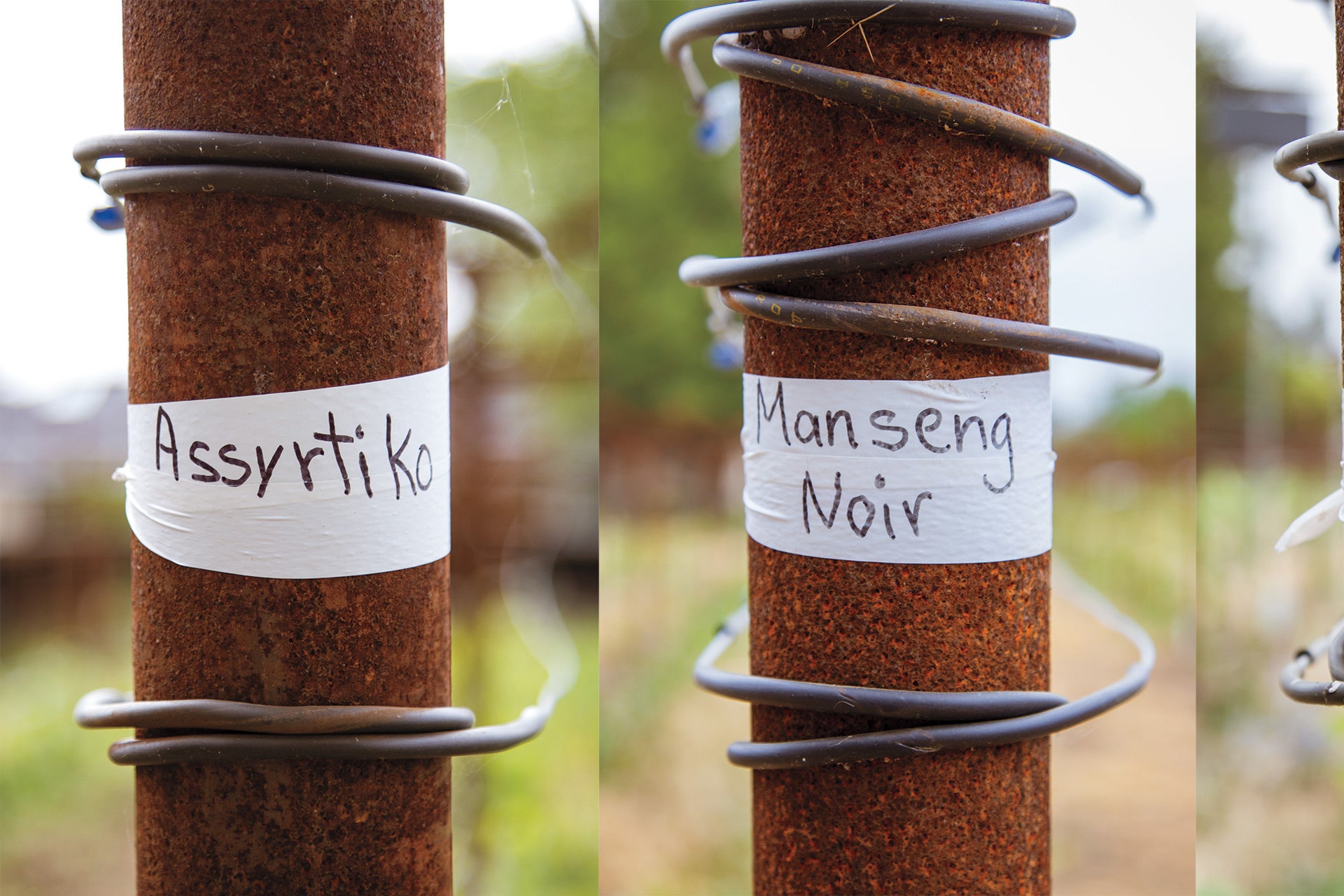 At the same time, Weinkauf says that a plant's desire to survive and adapt is often underestimated. That includes Cabernet Sauvignon. He's trialing different rootstocks for Cab, as well as many other varieties like Alicante Bouschet, Tinto Cão, Touriga Nacional, Souzão, Mourvèdre, Valdiguié, Carignan, Marselan, Manseng Noir, Arinarnoa, Falanghina and Assyrtiko. He seeks to increase his pool of new wines and blending components, and also build his understanding. "Climate change is not just about warming, but rather having greater climatic extremes, some hot, some dry, some wet, and new pests and pressures," says Weinkauf. "I always think that biodiversity is the only real buffer to these trends "Each of those yearly ups and downs might favor or disfavor the components we look for in great wine fruit, complexity, color, acidity—and as growers, we want them resilient to rot, water stress, mildew and other diseases and pests." For Pine Ridge Vineyards in Napa Valley, Nicolas Quillé, MW, Crimson Wine Group's chief winemaking and operations officer, says it's not only important to plant experimental varieties, but to plant Cabernet Sauvignon in the cooler pockets of the region as well. At Pine Ridge, Cabernet Sauvignons are made from Howell Mountain, Oakville, Rutherford and the Stags Leap District. "I'm concerned about climate change and the Cabernet business in the Napa Valley," says Quillé. "We are feeling the effects of intense heat and sun, the exposure lessening color, the grapes becoming more and more tannic, and flavors moving toward the jammy side. The acidity is going down, and the alcohol is going up." 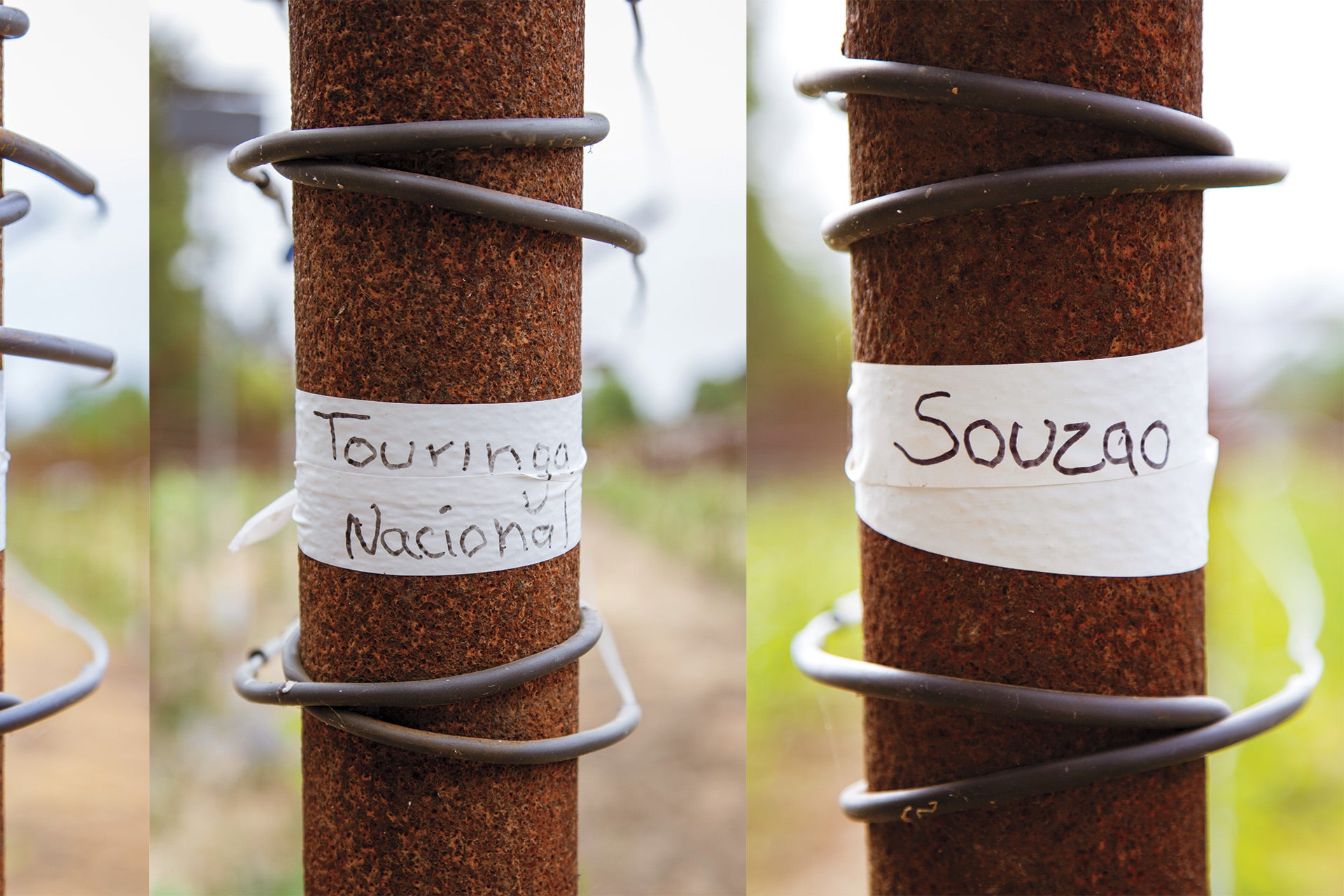 Changes in the BlendsQuillé says that the financial investment is too high to move away from Cabernet entirely. He says that viticultural practices and techniques can mitigate the heat, and that Napa wineries will have to make it work. With the 25% of other varieties allowed in Cab blends, he seeks to boost fresh fruit character through grapes that ripen later, have higher acidity and lower sugar, and are more drought resistant. BV Ranch 12 in Calistoga, the largest estate of Beaulieu Vineyards, has Touriga Nacional, Charbono, Tempranillo and Petite Sirah. A former Christian Brothers site, it was planted to those varieties long ago. Winemaker Trevor Durling bottled the Touriga Nacional on its own in 2018.
In 2022, Quillé intends to plant an experimental vineyard in Oakville to five yet-to-be-determined varieties. On his radar are Alicante Bouschet, Negroamaro, Marselan, Lambrusco and a Russian Crimean hybrid that's frost and cold resistant, as well as heat and drought resistant. All would need to be quarantined and cleaned up before planting. He's also planted Cabernet Sauvignon in Carneros, cooler climes that primarily grow Pinot Noir and Chardonnay. So far, 10 acres of Cabernet are in the ground, with another 40 acres planned. Carneros is where Artesa Vineyards & Winery has eight acres of Albariño, nine acres of Tempranillo and Ana Diogo-Draper, director of winemaking, is contemplating the addition of Graciano. "I think Tempranillo thrives in more moderate weather, where the flavors can fully develop and the wines present rounder tannins and beautiful floral notes," says Diogo-Draper. "These vines are planted in some of the cooler sites of the property granting the grapes hang time, while maintaining varietal character." 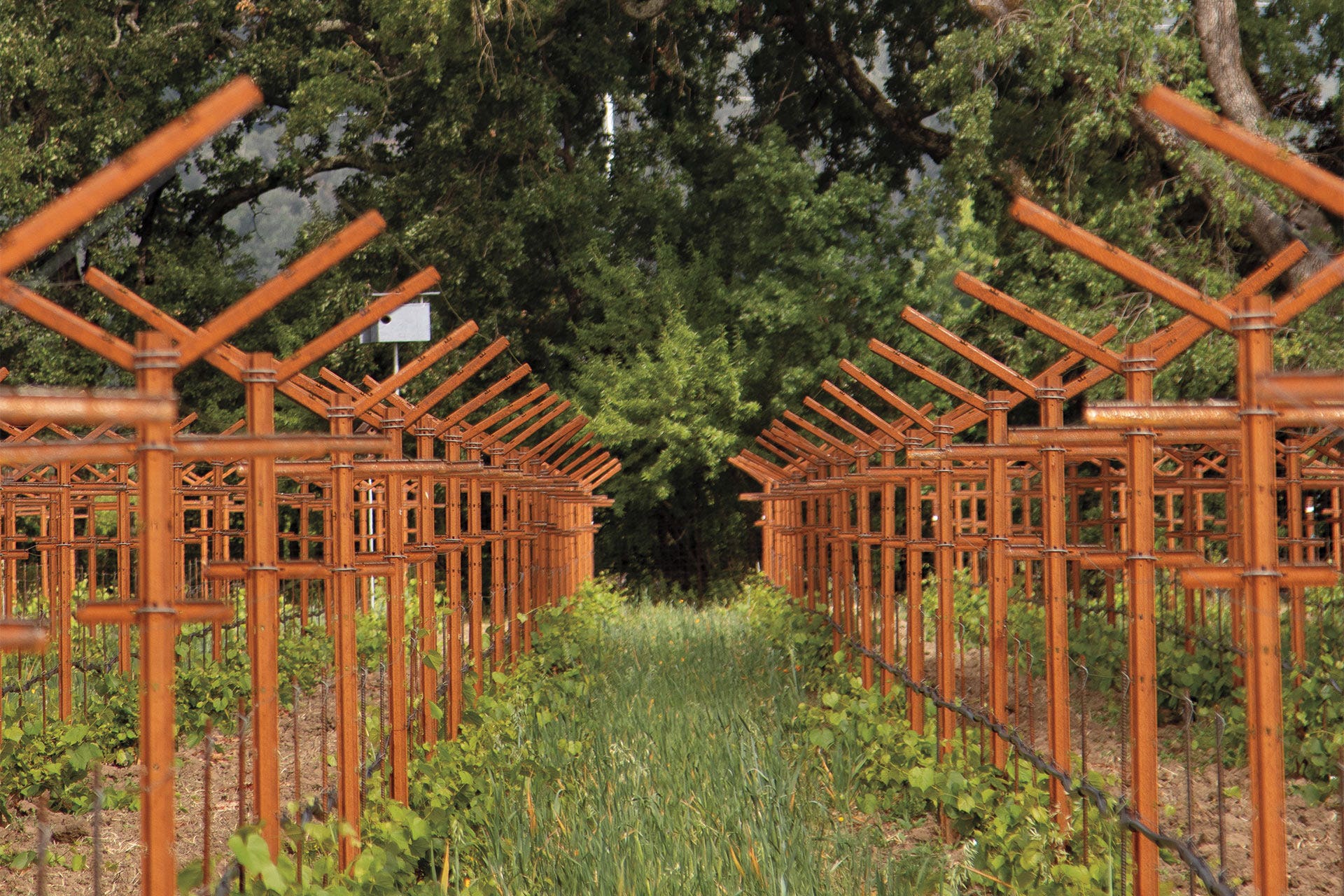 Meanwhile, Kale Anderson, who got his start at Colgin Cellars, has been a proponent of Rhône varieties in Napa Valley since he made his first barrel of Syrah in 2003. In 2011, he had Grenache and Mourvèdre planted for him in Rutherford, but only after he signed a 10 year contract that guaranteed he'd buy the grapes. He makes both a red and rosé from the site. "It's never good to have a monoculture in any ecosystem," he says. "Napa is amazing at growing lots of things. The beauty of the wine industry is we adapt. We must adapt, and we will. The question is, how fast?" |
| Go for the Gold: 10 Belgian-Style Tripels Perfect for Summer Posted: 02 Jun 2021 03:55 AM PDT  For a lot of drinkers, the Belgian-style tripel exists in a strange place in the beer lineup. It rests between the Belgian-style Dubbel—a dark, spicy ale of moderate strength—and the Belgian-style Quadrupel—a boozy monster deep in aromas of dark stone fruit. Tripels are light gold or yellow in appearance and typically pour with a thick head of foam. They are bright and inviting in spicy aromas and can be refreshing, while also packing a sneaky high alcohol punch. Guidance for beer judges is provided by the Brewers Association, which is used in competitions like the Great American Beer Festival and World Beer Cup. This is also helpful for drinkers still unfamiliar with the style. Herbs or spices (such as coriander) may be used in subtle amounts to enhance overall aroma or flavor according to the guidelines. Sometimes sugar will be used to lighten the ale's body, yet brewers should strive for a balance between the grain bill and hops. Where as many of the other Belgian-origin styles have been played around with in recent years through addition of fruits or taking turns in spirits barrels, tripels have mostly (but with some exceptions) been left unadorned and are allowed to express themselves as its creators intended. This is a welcome action by many drinkers. While it's a historical style, it still has not taken off in the United States with great gusto. By staying true to historical recipes or coloring within the lines, brewers are able to hone their skill, but also give the drinker a chance to taste a base beer without bells and whistles. For now, many breweries are using this as a seasonal offering or occasional release in their lineup, but there are some that offer it year-round. When you pick up some bottles, pair it with grilled fish or fresh shellfish, or experience what an asset it can be to a thoughtfully assembled charcuterie plate. Allagash Tripel; $13/12oz 4 pack, 92 points. This is a sweet, dry and malt-forward tripel that is simple in its execution which makes all the difference. It's a jaunty little sipper with a noticeable alcohol heat and slight hop bitterness to keep things interesting. It's a fun beer to drink and to help the mind wander a bit. Anderson Valley Brother David's Triple; $11/12oz 4 pack, 90 points. Showing a honey note that finishes dry, and a sneaky boozy approach, this bronze ale delivers. It’s low on carbonation and has a full, slightly oily body, but feels appropriately Belgian for whenever the mood strikes. Left Hand St. Vráin Tripel Ale; $11/12oz 6 pack, 90 points. Notes of honey and flowers drive this easy sipping tripel. It is medium in weight, with a depth of sweetness that builds overtime. It's a beer that fits most drinking occasions, but it would be at home with grilled fish, soft cheeses and cured meats. Sun King Touched by an Angel Belgian-style Tripel; $20/16oz 2 pack, 90 points. Dark bronze in color, with a full body and medium carbonation, there is no mistaking that this tripel has been aged in spirit barrels. The brewery says it was Bourbon barrels, but there is a coconut and tropical essence to this beer that evokes thoughts of rum. In any case, a turn in the wood takes this otherwise well-executed tripel and turns it up a notch into a cocktail in your beer glass. As it warms it brings out wood tannins in a soft faintly fudgy way. Coppertail Unholy American Trippel Ale; $11/12oz 6 pack, 89 points. This is a robust, golden strong ale that's forward in a honey note. With medium-low carbonation but a full body, the alcohol heat shines through in a noticeable way and enhances the drinking experience. It shows tones of fermented apple and pear, with a bit of spiciness including whiffs of raw cinnamon that emerge as it warms. Lawson's Finest Liquids 2020 Maple Tripple Ale; $25/500ml, 89 points. This is a rich, flavorful tripel, with an earthy, leathery character alongside a hint of molasses. The brewery says this annual release spends a year in barrels that previously held maple liquor. The tripel character is present in its dry profile but is overwhelmed by a sweet burnt-sugar flavor. New Realm Third Wind; $15/16oz 4 pack. This offers a fun combination of aromas that are reminiscent of faint incense, vanilla, dried herbs and overripe banana peel. There's a familiar dried mint and waxy flavor that drives the full-bodied palate. Victory Golden Monkey; $10/12oz 6 pack, 89 points. This ale offers a pleasing slap of clove and rye spiciness alongside a kick of booze. In a proper tulip glass, this snaps the drinking part of the brain to attention and focuses on the fun. A sweet, dry, honey forward tripel that is reliable every day and a great introduction to the style. We Recommend: New Glarus Tripel 5; $12/12oz 6 pack, 88 points. A herbal, spritzy concoction that leans heavily on clove and other assertive baking spice. A soapy lavender aroma in intertwined brining a floral sense to this ale that is an iron fist in a velvet glove. The bouquet that emerges from this glass deserves closer attention with each sip. Transmitter T1; $19/16oz 4 pack, 88 points. With a funky, assertive nose that has some vanilla, wood, and apple character backed by an ample amount of carbonic fizz, this tripel has a lot of the classic hallmarks of the style but with some zing. It feels like it could be at home in a cozy pub filled with small wooden tables that have soaked up more than their fair share of beer over the years. This tripel feels classic and aged well and is mellow around the edges, despite a still noticeable high abv. |
| You are subscribed to email updates from Wine Enthusiast. To stop receiving these emails, you may unsubscribe now. | Email delivery powered by Google |
| Google, 1600 Amphitheatre Parkway, Mountain View, CA 94043, United States | |

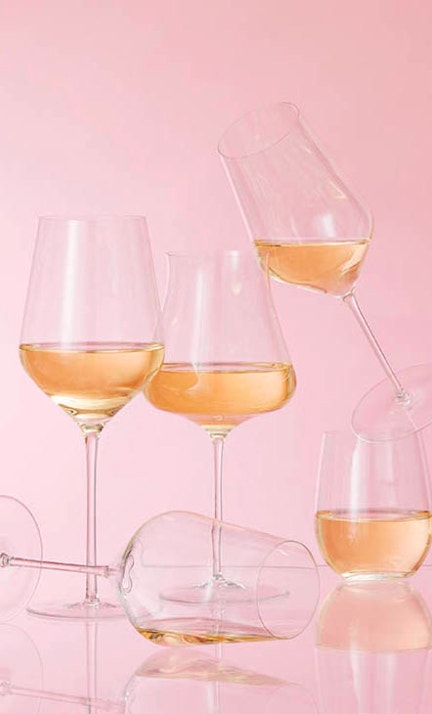
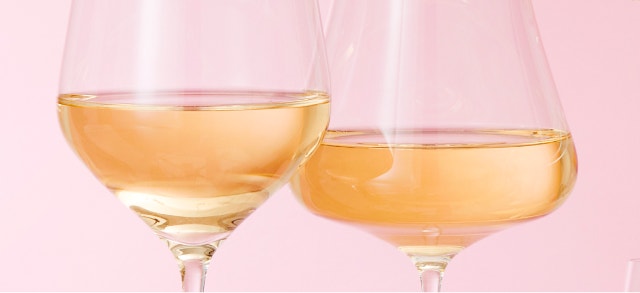
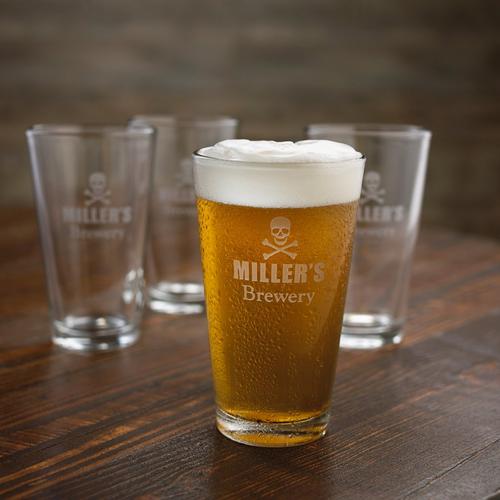















0 comments:
Post a Comment